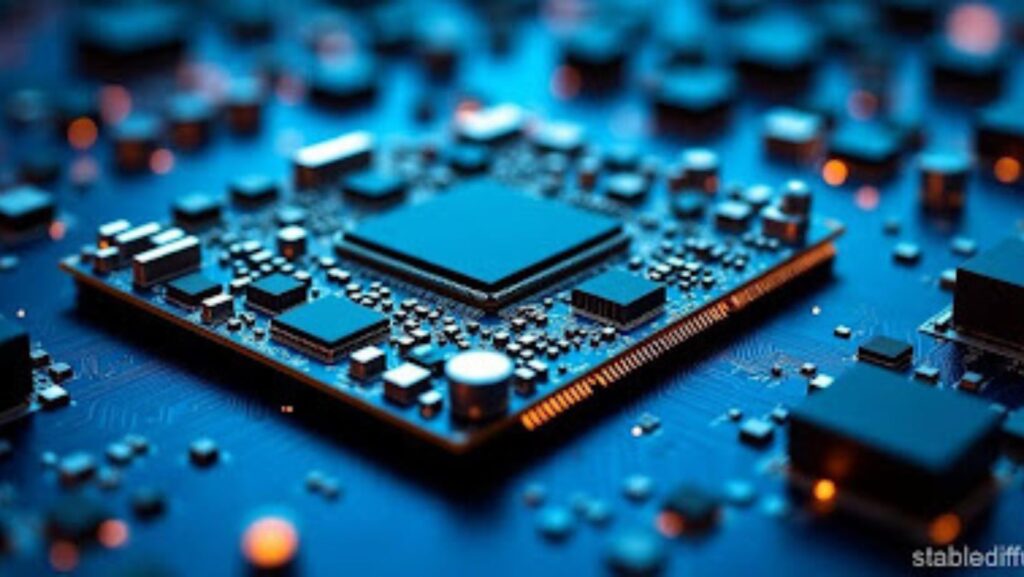
Cryptocurrency mining has evolved significantly over the years, from CPU mining in Bitcoin’s early days to the dominance of ASIC (Application-Specific Integrated Circuit) mining for major coins like Bitcoin and Ethereum (before its shift to proof-of-stake). However, a lesser-known but powerful mining method lies in FPGA (Field-Programmable Gate Array) mining. While FPGAs are not as commonly discussed as GPUs or ASICs, they still hold relevance in certain niche mining applications. This article explores what FPGAs are, their advantages in cryptocurrency mining, how to choose one, and how to set it up for optimal mining performance.
What Are FPGAs And Why Are They Useful For Mining?
An FPGA is a type of semiconductor device that can be programmed and reprogrammed to perform specific tasks. Unlike ASICs, which are designed for a single purpose, FPGAs are highly flexible, allowing users to configure them for different applications, including cryptocurrency mining. They are especially useful during periods when mining algorithms underwent frequent changes or when new cryptocurrencies emerged with novel hashing functions.
In the early 2010s, mining began with CPUs, but miners quickly transitioned to GPUs due to their parallel processing capabilities, which offered enhanced performance. FPGAs emerged as a middle ground, providing better energy efficiency than GPUs and greater flexibility than ASICs. Here are the key advantages of FPGAs in Mining:
-
Reconfigurability
FPGAs consist of an array of programmable logic blocks interconnected via programmable routing. This architecture allows users to configure the hardware to perform specific computations, making them adaptable to various applications, including cryptocurrency mining.
-
Power Consumption
FPGAs often have a better hash rate-to-power consumption ratio than GPUs, making them more energy-efficient for specific mining algorithms.
-
Niche Algorithm Support
Many cryptocurrencies with ASIC-resistant algorithms (e.g., Keccak, Blake, or X11) can be mined effectively using FPGAs.
-
Solid Performance
While not as powerful as ASICs, FPGAs can outperform GPUs in certain mining tasks, offering a balance between speed and flexibility.
FPGAs also have some disadvantages:
-
Complexity
Programming FPGAs requires specialized knowledge of hardware description languages, making them less accessible to the average miner.
-
Initial Cost
High-quality FPGA boards can be expensive, and achieving optimal performance may necessitate additional investment in cooling and power infrastructure. Moreover, you can’t use or resell an FPGA board for other applications like gaming, programming, or sports betting. GPUs and CPUs for mining are way more practical then.
-
Scalability
FPGAs may not scale as efficiently as ASICs in large mining farms, limiting their appeal for extensive operations.
Current Popularity Of FPGAs In Mining (2025)
By 2025, the mining ecosystem is dominated by high-efficiency ASICs, especially for leading cryptocurrencies like Bitcoin. ASICs are custom-built for specific algorithms, offering unparalleled performance and energy efficiency.
This specialization has made it challenging for FPGAs to compete directly in major mining operations.
However, FPGAs have carved out niches in certain scenarios:
-
Algorithm Flexibility
For cryptocurrencies that frequently modify their hashing algorithms or employ hybrid consensus mechanisms, FPGAs’ reprogrammable nature allows miners to adapt without the need for new hardware.
-
Research And Development
FPGAs serve as valuable tools in academic and corporate research settings to test and optimize mining algorithms before committing to ASIC design and production.
Despite these niches, the general trend in 2025 indicates that FPGAs are less popular for large-scale mining operations compared to their peak usage years. The rise of AI and machine learning applications has also influenced hardware demand, with GPUs and specialized accelerators being favored for their versatility in these domains.
Choosing An FPGA For Cryptocurrency Mining
If you decide to use an FPGA for mining, selecting the right hardware is crucial. Here are key factors to consider:
-
FPGA Model And Performance
Some of the ideal FPGAs for mining include Xilinx VU9P, Xilinx VU13P, BittWare CVP-13, and Xilinx KCU1500. These models vary in terms of processing power, memory, and efficiency. The higher-end models tend to offer better mining performance but come at a steeper price.
-
Power Efficiency
Look for FPGAs with a good balance between hash rate and power consumption. Unlike ASICs, where power efficiency is relatively standardized, FPGA efficiency depends on the specific algorithm and bitstream used.
-
Bitstream Availability
A bitstream is the FPGA’s firmware that tells it how to execute mining algorithms. Some bitstreams are open-source, while others must be purchased from developers. Ensuring that a reliable bitstream is available for your chosen FPGA is critical.
-
Cooling Requirements
FPGAs can generate significant heat. Adequate cooling—such as water cooling or custom heatsinks—can prevent overheating and maintain optimal performance.
Setting Up An FPGA For Mining
Once you have chosen your FPGA, the next step is setting it up for mining. Below is a step-by-step guide:
-
Identify The Target Cryptocurrency
Determine which cryptocurrency you intend to mine. Research its algorithm, network difficulty, and existing mining hardware landscape to assess potential profitability.
-
Install Required Software
Programming the FPGA requires creating or obtaining a bitstream—a configuration file that defines the hardware’s operation.

Open-source projects, such as the Open-Source FPGA Bitcoin Miner, can serve as starting points, though customization may be necessary. Download and install the necessary drivers for your FPGA from the manufacturer’s website. Install a mining software package compatible with FPGA mining, such as OpenCL miners or specific FPGA mining software.
-
Optimize Power And Cooling
Adjust voltage and clock settings to find the ideal balance between performance and power efficiency. Ensure proper cooling to avoid overheating and extend the lifespan of the hardware.
-
Monitor And Maintain
Use monitoring software to track hash rate, power consumption, and temperature. Update firmware and bitstreams as needed to stay competitive. Stay informed about changes in the cryptocurrency’s network and mining community.
Conclusion
FPGA mining is not currently popular for mining the most popular cryptocurrencies like Bitcoin, Ethereum (post-merge), Litecoin, etc. The dominance of ASICs has made it extremely difficult for FPGAs to compete in terms of hash rate and energy efficiency for these algorithms. However, while FPGAs are not as prevalent in mainstream cryptocurrency mining as they once were, they remain valuable tools in specific contexts. Their adaptability and energy efficiency make them suitable for certain algorithms and emerging cryptocurrencies.


